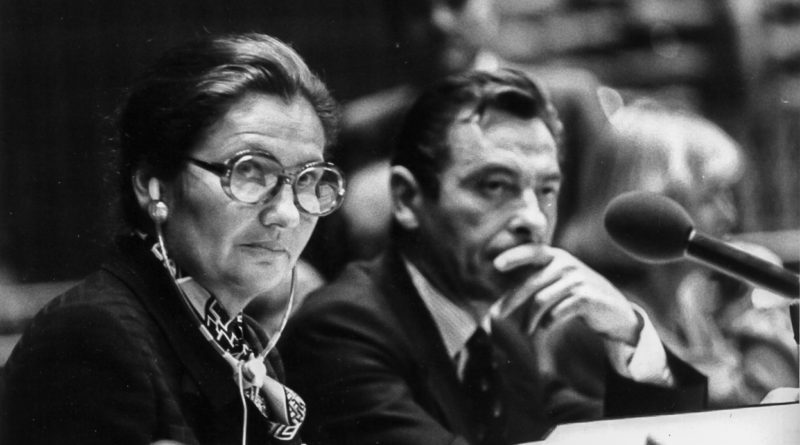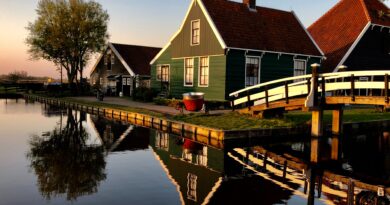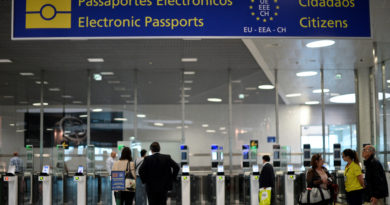10 women for Europe
The attire at European political meetings is still dominated by dark male suits. But the recent history of Europe is also populated by women who have pursued their ideals with passion bringing real change to the continent. On International Women’s Day, meet 10 women who have shaped Europe in the past 70 years.
1) Ursula Hirschmann – the person who made the Ventotene Manifesto (the first sketch of the European Union) known outside the island where the authors were confined. Originally from a Jewish family of Berlin, she met her first husband in France, where she had escaped from Nazism with her brother. She married Eugenio Colorni in Italy and the two became anti-fascist activists. Because of this activity, Colorni was confined in Ventotene. She managed to follow him without being constrained on the island. Ernesto Rossi and Altiero Spinelli, co-authors of the Manifesto for a “free and united Europe”, were prisoners there too. They wrote the Manifesto on cigarette papers and Ursula brought it to the mainland hidden in a tin box to circulate it via the resistance. Colorni was later killed by the fascists and Hirschmann married Altiero Spinelli.
2) Marga Klompé – first female member of what is now the European parliament. When the Common Assembly of the European Coal and Steel Community (ECSC) started to operate, in 1952, it was a consultative body of 78 delegates appointed from national parliaments. Marga Klompé, a Dutch politician, was the only woman who joined at the time. In 1955 she participated in the working group on the powers of the Assembly. This was part of the preparation of the Messina Declaration, which laid down the foundations for the Treaties of Rome. Klompé stepped down from the Assembly in 1956 to become the first female minister of the Netherlands. In charge of social affairs, in 1963 she passed a bill on social security that replaced a previous bill on poverty.
3) Simone Veil – first president of the elected European parliament. The direct election of the European parliament started in 1979. Before then, only 31 women had been appointed to the assembly (8 from the UK alone, after the country joined the European Community in 1973). In 1979, 68 women were elected out of a total of 410 members. Among them, there was Simone Veil, a French lawyer and politician who also became president of the parliament. She had survived Auschwitz, but lost part of the family in concentration camps during World War II. Later she chose politics over the legal profession and held several positions in government. As a Minister of Justice, she improved the conditions of women in prisons. She is especially known as Minister of Health, as in 1975 she steered – against major opposition – the adoption of the abortion law in France.
4) Louise Weiss – women rights campaigner and oldest member of the European parliament. Also elected in 1979, Louise Weiss joined the European parliament when she was 86. She kept her role until 1983, when she died aged 90. She campaigned for women rights throughout her life. Trained as a teacher, she became a writer, journalist and activist. In 1918 she founded Europe Nouvelle (New Europe), a weekly newspaper with Thomas Mann among the authors. In the 1930s she fought for giving women in France the right to vote and during one of the protests in Paris she had herself chained with other women to a street light.
5) Margaret Thatcher – first female Prime Minister of a EU country, in 1979. Thatcher campaigned for the UK to remain in the European Community in the 1975 referendum. Then she negotiated the UK rebate, a reduced contribution to the EU budget that is still in place today. Although she signed the Single European Act of 1987, the first major change to the Treaties giving more powers to Brussels, she never really pursued a strong European integration. Her fights with Jacques Delors, the then Commission President, have been recorded on the Los Angeles Times as the personification of the debate on whether Europe should be a free-trade zone or a fully integrated union.
Video: European parliament.
6) Sofia Corradi – “mother” of the Erasmus student exchange programme. An Italian academic, after being denied the recognition of her studies in the US, she fought for 20 years to set up a Europe-wide student exchange programme. Since its creation, in 1987, the initiative has seen the participation of more than 5 million people and has extended to apprenticeships, staff and volunteering opportunities. The programme is considered one of the major successes of the European Union.
7) Christiane Scrivener – first female member of the European Commission, together with Vasso Papandreu. The French and Greek politicians were appointed in the College of Jacques Delors, in 1989. Scrivener had been the first French Minister with a consumption portfolio, in 1976, and promoted the adoption of the first law on consumer protection in France. Papandreu had been founding member of the Panhellenic Socialist Party (PASOK), after the 1967-74 military dictatorship in Greece.
8) Emma Bonino – human rights activist and European Commissioner. An Italian politician, in the 1970s she fought successfully for the adoption of the divorce and the abortion laws in Italy. A high profile campaigner for the legalisation of drugs, sexual and religious freedoms and against poverty, she was also among the first women elected at the European parliament. In 1994 she took over from Scrivener as European Commissioner for Consumer Policy and Fisheries, taking also responsibility for the European Community Humanitarian Office (ECHO), created in 1992. After 9/11 she spent a year in Cairo to study Arabic and better understand Islam. She has been Minister for Trade and Foreign Affairs and is member of the Italian Senate.
9) Baroness Ashton of Upholland – First High Representative for Foreign Affairs and Security Policy. When the Lisbon Treaty came into force, in 2009, it created the new function of EU foreign policy chief. Appointed to the role, Catherine Ashton reformed the organisation of EU delegations around the world establishing the EU External Action Service. After her term, in 2014 another woman was appointed to the job, the Italian Federica Mogherini.
10) Angela Merkel – German Chancellor since 2005 and de facto leader of the European Union. From a Polish and German descent, Merkel stood for the first time in the German federal election in 1990, the first since the reunification of the country. She became the first female leader of a German party in 2000. She played a key role in the handling of the 2008 financial crisis and the 2015 refugee crisis in Europe. She led Germany through a period of economic strength and growing international influence, while promoting European integration at the same time.
There have been many other prominent female figures in the history of Europe. Margot Wallstroem, former EU Commissioner, now Foreign Affairs Minister of Sweden and promoter of a “feminist foreign policy”; Dalia Grybauskaite, the Lithuanian President who stood up to Vladimir Putin; Margrethe Vestager, the EU Commissioner who presented Apple a bill of 13bn euros for unpaid taxes in Ireland are some examples. And who knows what place will gain in history Polish Prime Minister Beata Szydło, UK’s Theresa May, Scotland’s Nicola Sturgeon or French presidential candidate Marine Le Pen.
One sure thing is that there is still a long way to go for women in Europe. Only 29% of members of parliaments across EU countries are women and there has never been a female president of the European Commission or the European Court of Justice.
Claudia Delpero © all rights reserved.
Photo: Simone Veil chairing a European parliament meeting by Claude Truong-Ngoc [CC BY-SA 3.0] via Wikimedia Commons.





